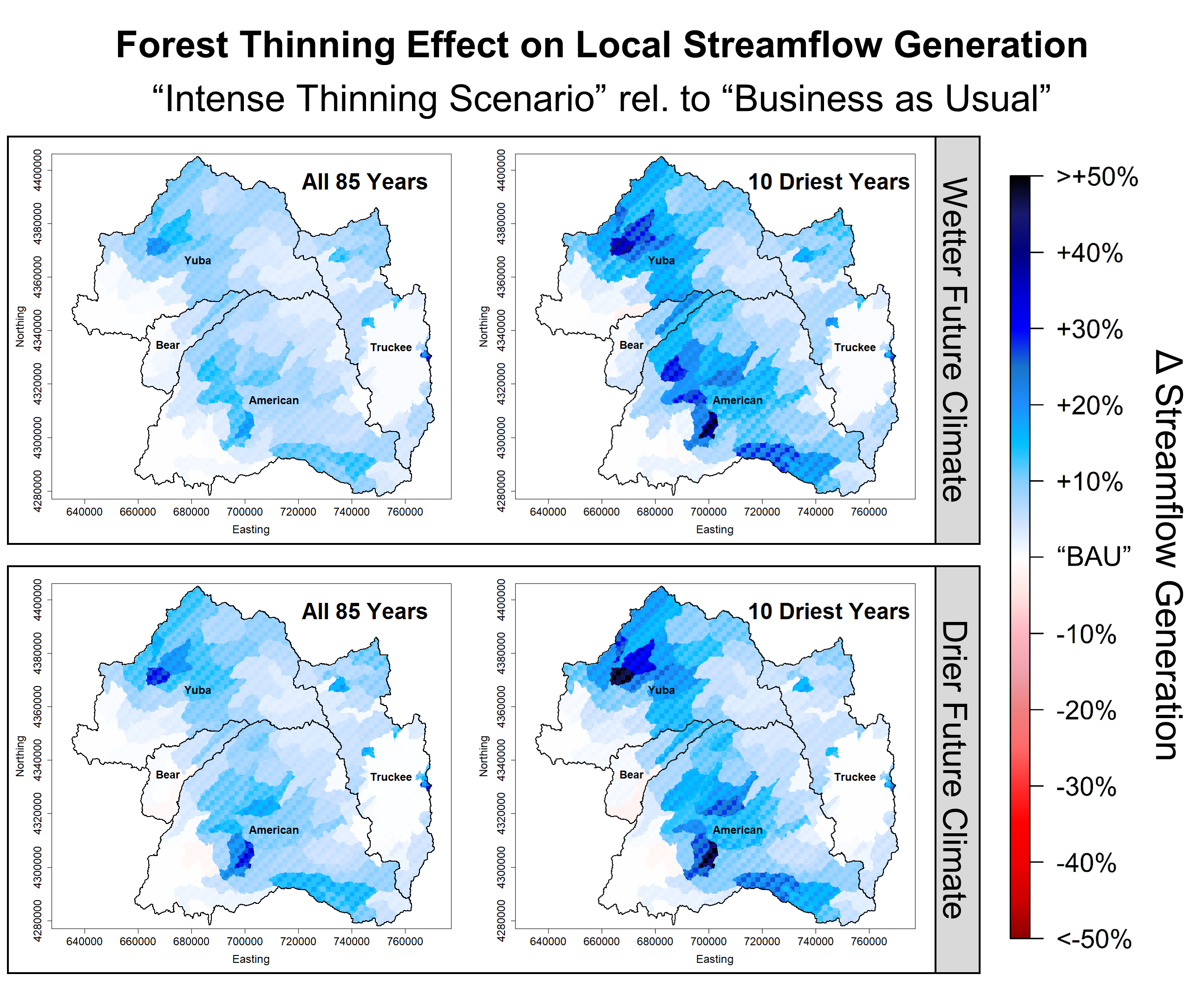Recent research in the Sierra Nevada region presents a compelling case for forest thinning as a multifaceted solution to environmental challenges. By reducing forest density, benefits such as diminished forest fire threats, ecosystem restoration, augmented water yield, and economic boosts from forest products are achievable.
The study utilized the Distributed Hydrology Soil Vegetation Model (DHSVM) to examine the hydrological impacts of various forest management strategies in the Tahoe-Central Sierra area of California and Nevada. This included a range from maintaining current practices to fully restoring the natural fire return interval.
The research revealed that forest thinning has the potential to substantially increase water yield. In smaller, densely forested catchments (50-100 sq. km), under dry climate conditions, a remarkable 50% rise in yearly water yield was observed. However, in larger areas (1,000-5,000 sq. km), this effect is moderated by changes in vegetation evapotranspiration.
One notable concern is the increase in yearly peak flows due to intensive local forest thinning, which could pose risks to small-scale infrastructure in upstream areas. Nevertheless, the overall flood risk downstream predominantly hinges on climate factors.
Strategically, small-scale catchments directly above reservoirs, with dense forests, emerge as prime locations for targeted thinning. This approach not only boosts water yield but also mitigates risks associated with higher peak flows.
This study underscores the importance of nuanced forest management. It highlights how strategic thinning can balance ecological, hydrological, and economic needs, providing a blueprint for sustainable forest management in the Sierra Nevada and similar regions.

 Big Data
Big Data
